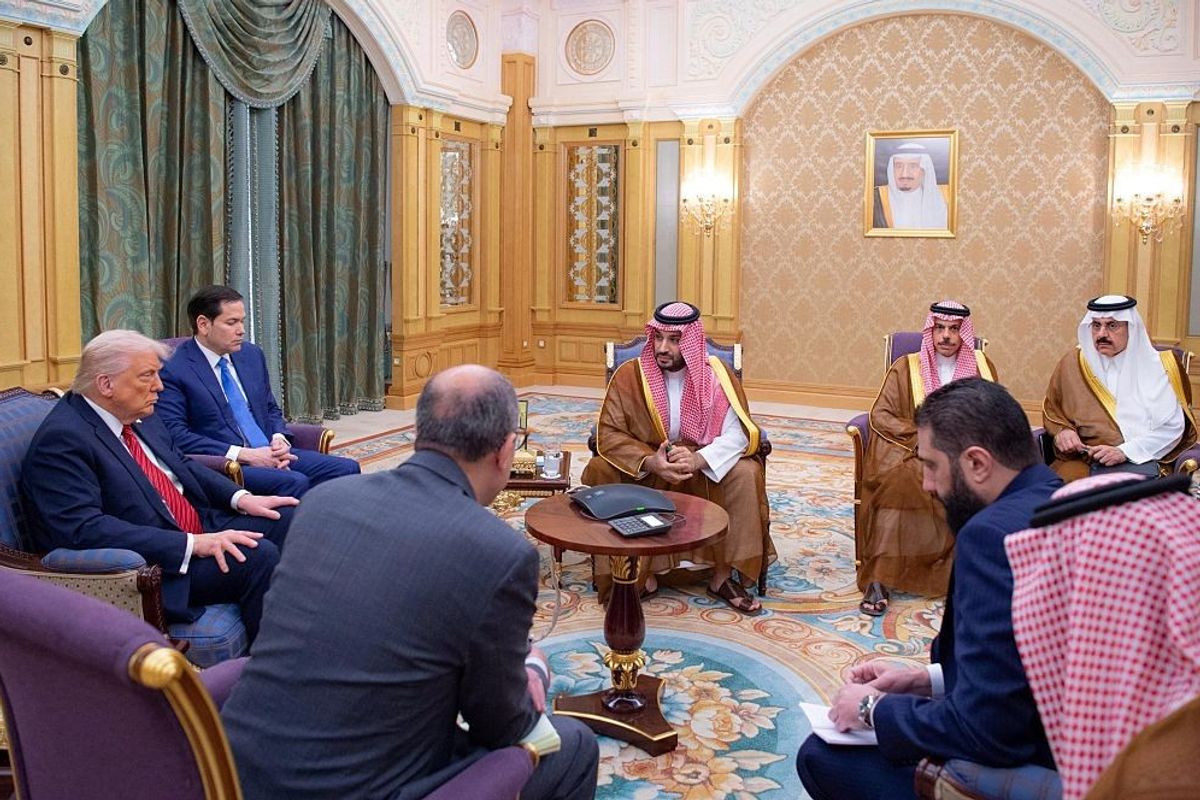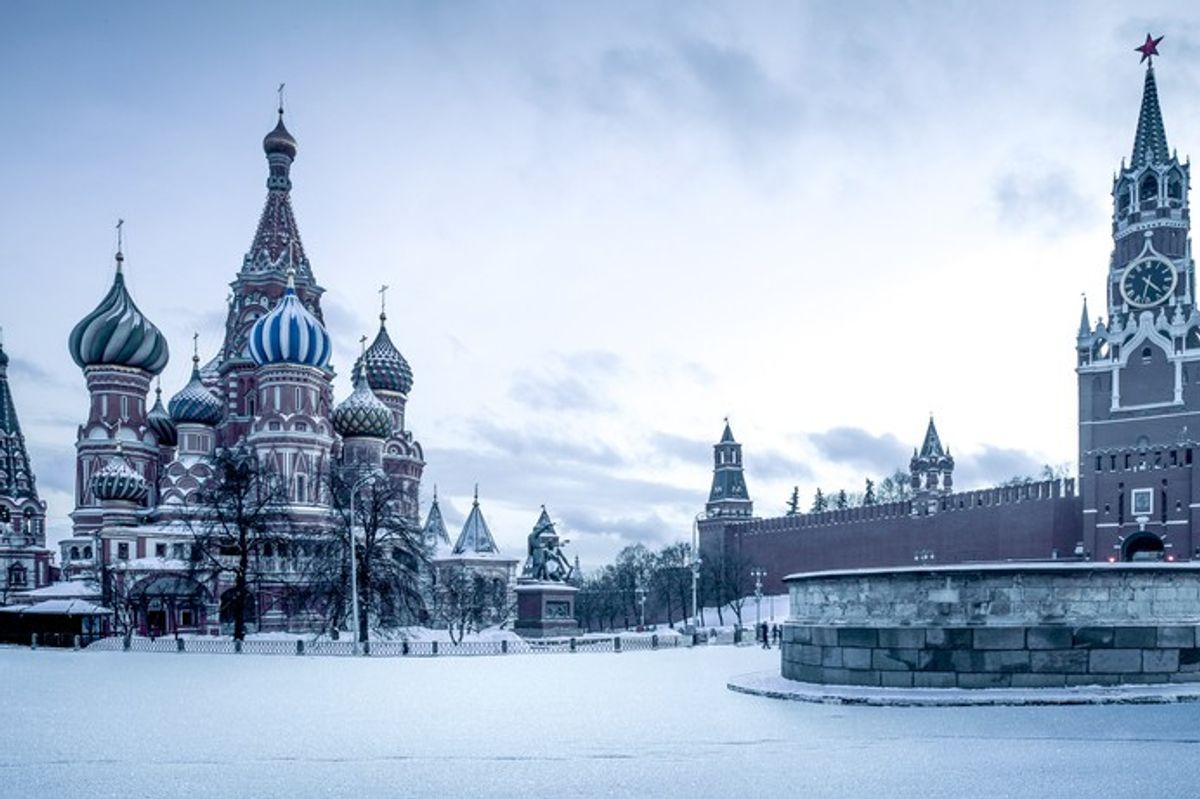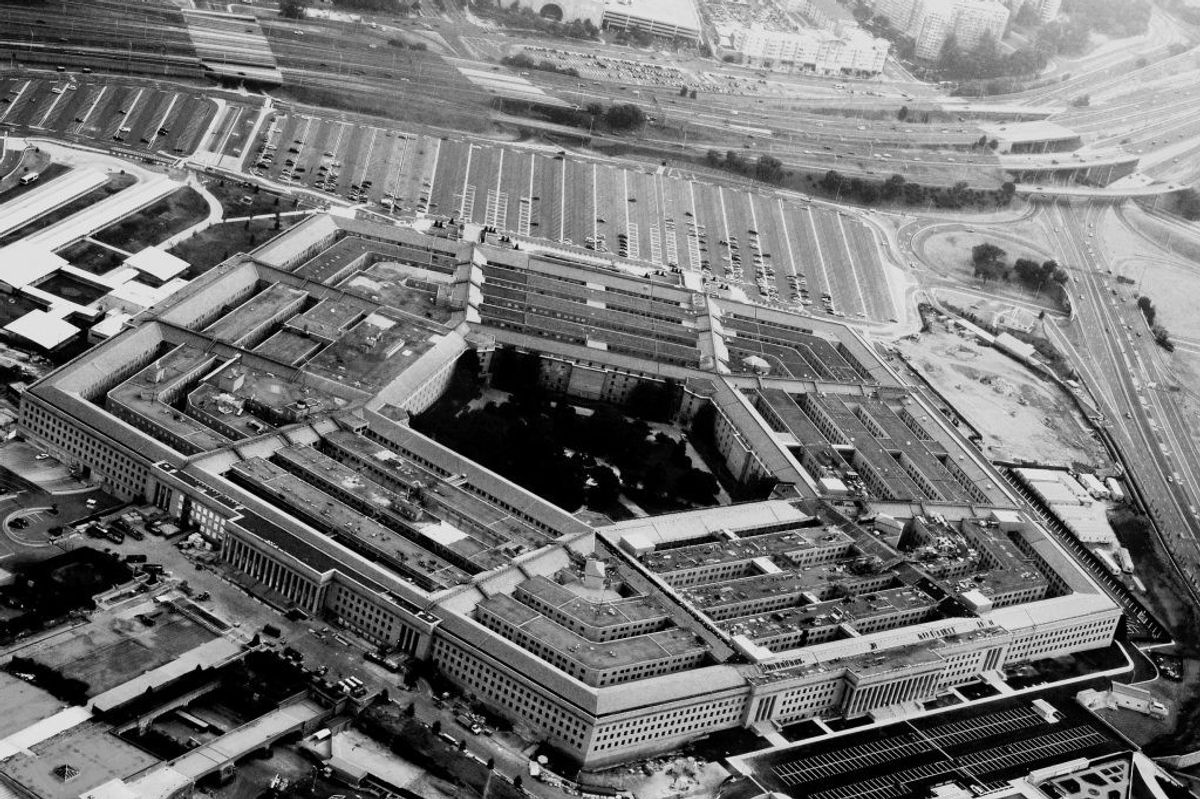OPINION — Robert Baer’s book The Fourth Man leads readers to conclude—falsely—that highly accomplished, retired CIA officer Paul Redmond was himself a long-time spy for the KGB. As former leaders of Counterintelligence who were directly involved over decades in the Russian operations and investigations discussed in the book, we found the book to be riddled with errors and what we found to be irresponsible, false assumptions from Mr. Baer’s primary sources.
Let’s dig in to why.
CIA counterintelligence investigators who were directly involved in the issues, as well as retired and currently serving intelligence officers at all levels, have voiced strong objections to the book. We owe it to them, to Mr. Redmond, to the intelligence profession, and our commitment to solve real counterintelligence threats, to correct the record.
Dissecting all the inaccuracies in the book is beyond the scope of this article, so, our focus is on the most egregious errors and what might be done to correct them. Because of classification issues, even though we had access to sensitive details in our former roles, we cannot include all of the intelligence to which we were privy, which would further strengthen our findings.
Mr. Baer’s book purports that a still undiscovered, high-ranking CIA officer was the most damaging mole during the Cold War and beyond—the Fourth Man—after notorious Russian spies Edward Lee Howard, Aldrich Ames, and Robert Hanssen. Mr. Baer identifies three retired CIA officers and one retired FBI analyst by name in the book as his primary sources who assert—without credible facts or access—that Mr. Redmond is the alleged spy. Dramatic if true, but based on the evidence we know, it is pure fiction.
In our opinion, Mr. Baer’s sources provided a pattern of incorrect assumptions, factual errors, and a confirmation bias that falsely attributes virtually all Russian CI anomalies three decades ago, to Mr. Redmond. A reader with deeper knowledge of the facts, can see that Mr. Baer—who acknowledges he has no experience in Counterintelligence or Russian operations—omitted or downplayed important exculpatory evidence and relied largely on the views of this small set of retired CIA sources.
We know the named CIA officers and we also know that they did not have access to all Russian operations and investigations. Importantly, they lost access all together well before key developments occurred.
Mr. Baer also reveals that he was persuaded in 2019, (23 years later) to write the book by his one-time CIA Division Chief, who is one of his key CIA sources. This raises interesting questions about motivation. His former boss, Baer writes "would come around to proposing I blow the dust off the Fourth Man investigation and see what I could do to restore it to life. He didn’t think I’d solve it, let alone put the Fourth Man in jail; the FBI had tried its best and failed. But (his) hope was that in my poking through the ashes, it would come to the Fourth Man’s attention and make him pay the piper in the currency of sleepless nights. That's of course if the man indeed were guilty; if not, he’d ridicule the whole enterprise as conspiratorial bullshit and not give it a second thought.”
The result is a tale falsely implicating someone in the act of espionage (in interviews Mr. Baer has used the word “treason”) without disciplined investigation, fact-based evidence, input from key experts and managers most involved for years, and due process. Mr. Baer did not give appropriate weight to others with better access, who we know told him he was on the wrong path. He possibly did not understand that true intelligence professionals would not, and should not, provide him with sensitive details on Russian operations and investigations.
In our understanding, he also did not offer Mr. Redmond an adequate opportunity to respond to the collection of false allegations prior to publication, nor give sufficient attention to key open-source information. It’s a troubling reminder of the dangerous abuses of the James Jesus Angleton era and is a case study in how not to do counterintelligence work. It certainly should not be portrayed to the public as remotely credible spy-catching work.
Here are the key facts as we see them: CIA investigations and operations, of which we are aware, dating back decades, contradict the claims from Mr. Baer’s sources and reveal no evidence that Mr. Redmond was a spy. Rather, what we did see, is that Mr. Redmond spent a career rooting out traitors across the US Government, specifically managing and protecting CIA clandestine sources who identified the traitors in our midst.
One example: Mr. Redmond was the hero of the devastating Aldrich Ames espionage case, reenergizing what had become a moribund investigation in 1991, and turning it into a disciplined and focused effort which led to the identification and arrest of Ames by the FBI in 1994. He was the principal architect for CIA’s enhanced CI program based on lessons learned from the Ames case, including the creation of a follow-on, permanent Special Investigative Unit (SIU) which identified other Russian spies in the CIA, FBI and USG.
Importantly, Mr. Redmond knew the most sensitive operations in CIA which survived and thrived. In our decades of experience, a real spy would have compromised those operations for his/her own protection—as Ames and Hanssen did. The CI ecosystem that Mr. Redmond built would have been setting a sure trap for his own capture, were he a traitor. Suggestions that the Russians might give up valuable spies like Ames or CIA officer Harold J. Nicholson, to protect Redmond are also ridiculous; no CI professional we know finds this credible.
We found many examples where the book goes wrong. Let’s get into several key examples.
MATRIX BRIEFING
Mr. Baer reports that his primary CIA source created a “matrix” of leads to a senior level Russian penetration of the CIA in 1994, and briefed those details to several people, including Mr. Redmond and Mr. Ed Curran. (Mr. Curran was the senior FBI agent assigned to manage espionage investigations at CIA in 1994, by a Presidential Directive in response to the damage done by Ames.) Mr. Baer says his CIA sources believed the senior CIA spy “could only be Mr. Redmond.”
Mr. Curran and Mr. Redmond followed these issues intensely but neither recall a briefing implicating Mr. Redmond. Both raise the obvious question “why would anyone have briefed Mr. Redmond if he were indeed a suspect?”
In fact, the espionage lead described by Mr. Baer we know to have been codenamed “GRAYSUIT”, was the subject of an extensive FBI and CIA investigation in 1994, and beyond. In 2000—after Baer’s CIA sources had retired—the investigation determined that “GRAYSUIT” was senior FBI Agent Robert Hanssen, not a CIA officer.
Key lead elements to “GRAYSUIT” were provided by the Russian CI source whom Mr. Baer identifies as “Max” in his book, who mistakenly reported the Russian spy was in the CIA. An extraordinary operation produced forensic evidence in 2000, which confirmed that “GRAYSUIT” was in fact Hanssen, who was arrested by the FBI in February 2001.
The Fourth Man Mr. Baer describes is in fact the Third Man—Hanssen.
The unclassified Department of Justice Inspector General’s report on Hanssen is but one of many authoritative open-source documents that provides extensive background confirming this, and other details of the investigation.
Upon reviewing Mr. Baer’s incorrect allegations in his book, Mr. Curran confirmed that while assigned to CIA—and when he returned to FBI to oversee all Russian CI operations and investigations—he saw no information nor heard any discussion that Mr. Redmond might be the spy for whom FBI and CIA were looking. In both assignments, Mr. Curran and his team were intensely focused on resolving the “GRAYSUIT” lead. He is the key person to whom Mr. Baer’s sources should have provided any such information, if they indeed had any. They did not.
MASTER PUPPETEER
We believe that Mr. Baer and his CIA sources, portray Mr. Redmond as a “Master Puppeteer” controlling all of CIA’s Russian operations, closing down the SIU and firing its Chief (Mr. Baer’s primary source) to protect himself as the KGB mole.
These claims are both false and impossible. First, the reality is that no CIA officer no matter how senior or clever, could control all CIA officers working Russian operations worldwide, much less FBI operations.
Second, FBI agents and CIA officers involved in the investigations, know that the SIU was never closed down but was significantly expanded under Mr. Redmond and Mr. Curran and continued to manage Russian investigations with the FBI for the next three decades.
Third, Mr. Baer’s primary CIA source was relieved as SIU chief in 1995, by her immediate CIA management (below Mr. Redmond) after a year of battling her management and repeated complaints about her from the FBI agents responsible for the espionage investigation. She was replaced with a senior officer who was more willing to adopt the many post-Ames changes, particularly sharing key information and working more effectively with the FBI.
Finally, we were all personally involved in the Russian operations that Mr. Baer’s CIA source provided as examples of Mr. Redmond running “Back Pocket” cases and can confirm those claims are false and ridiculous. The facts are documented in CIA files and/or confirmed by the officers who handled the operations—including the authors.
Mr. Baer and his sources fail to explain that Mr. Redmond was in fact working in coordination with other CIA managers to direct smart, necessary compartmentation of Russian operations. He was not a “puppeteer” trying to protect himself from being caught but rather, he was protecting CIA’s valuable clandestine Russian sources from unidentified traitors. This compartmentation enabled those sources to identify American traitors—Ames, Nicholson and Hanssen, among others. One of these sources has referred to Mr. Redmond as his “Guardian Angel”—and for good reason.
NO INTEREST IN SPY CATCHING
Mr. Baer incorrectly claims that no one in CIA leadership wanted to find another spy after Ames. This is absurd. In fact, CIA leadership at all levels, was intensely focused on improving CI programs to identify spies in our midst, including “GRAYSUIT” and others. They embraced the 1994 Presidential Directive assigning senior FBI Agent Mr. Curran, to lead the effort and committed significant resources, personnel and leadership focus.
Mr. Curran, Mr. Redmond and others significantly improved the CIA-FBI partnership and many other programs. CIA maintained extensive documentation of all of this including, but not limited to, important investigative developments, interaction with the FBI, compartmented briefings for Congressional oversight, and regular updates provided to senior CIA leadership, including the Director.
In 2021, Dr. Richard Rita, a senior CI analyst, drawing from extensive CIA documentation, documented all of this and more in a classified report on the history of the SIU from 1990–2003. After reading Mr. Baer’s book, Dr. Rita identified “serious factual errors, the combined weight of which completely undercuts misguided speculation that Redmond was a Russian mole.” Dr. Rita was a senior CI analyst in the SIU and Russian CI from 1995–2014—including six years as Chief of SIU.
Mr. Baer reports that after being relieved in 1995, his principal CIA source continued to run a rogue counterespionage investigation within the CIA. If true, this was a major violation of authorities and tradecraft for conducting competent espionage investigations with the knowledge and supervision of designated senior officers of the CIA and FBI.
The FBI had primacy for investigating these espionage activities; such a rogue operation would not have access to critically important information and capabilities, such as the CIA’s Office of Security and the FBI agents in charge of the “GRAYSUIT” investigation. It rightfully would have brought strong administrative penalties in CIA—likely termination of employment—and possible obstruction of justice charges from the FBI.
HOW MIGHT THE INACCURACIES BE CORRECTED?
Fundamental ethics and principles of Counterintelligence require a comprehensive correction of this important history as it relates to allegations against Mr. Redmond and CIA leadership. Doing nothing is not acceptable given the massive contemporaneous documentation that could correct the false accusations.
We have seen first-hand the tragic results when someone is falsely accused; it’s devastating for the individual, the family, colleagues, and the credibility of the Government institutions involved. It offers tremendous opportunities for adversaries to work against US interests, diverts CIA and FBI resources from finding real traitors, and allows more time to damage US intelligence. It leaves important foreign allies—who follow our CI issues closely—with incorrect concerns about the security of their own operations and information.
From our collective experience leading Counterintelligence on these issues, we suggest the CIA take the following actions:
1) Prepare a comprehensive classified and unclassified analysis documenting the key inaccuracies in Mr. Baer’s book together with the historically correct facts.
We are familiar with vast amounts of contemporaneous documentation in the CIA, retired and serving officers with first-hand knowledge, and open-source information, which together, can correct the record. The following provides a solid place to start. Perhaps the good offices of CIA’s Center for Studies in Intelligence (CSI) can assist using these sources to document an accurate history.
CIA managers and CI experts involved at the time, should be interviewed together with a review of the extensive documentation in Dr. Rita’s classified history of the SIU.
While reviewing Mr. Baer’s book, we prepared a detailed analysis of the inaccuracies together with the corrected facts, which has been cleared by CIA for use in various unclassified articles and presentations. We would be happy to provide that to assist with the analysis and anything else, to correct the facts.
DOJ’s unclassified and classified August 2003 Inspector General’s Report entitled “A Review of the FBI’s Performance in Deterring, Detecting and Investigating the Espionage of Robert Phillip Hanssen” documents evidence the spy for whom the FBI and CIA were looking —“far more damaging than Ames“ —was in fact, Hanssen. It provides other important background as well.
2) Share the comprehensive analysis with the FBI to correct false information.
Mr. Baer’s book claims the FBI interviewed his three CIA sources in 2006, arranged and attended by Mr. Baer’s fourth source, the FBI analyst. The CIA sources allegedly provided the FBI with the same inaccurate information appearing in Mr. Baer’s book, which we assume was documented in official 302 investigative reports.
Meanwhile, the managers and longtime investigators in the CIA and FBI—including the authors of this article—were not asked to provide the facts before, during or after 2006. We believe CIA is obligated to ensure the FBI has the corrected facts from credible sources and any other contemporaneous documents or reports correcting information from Baer and his sources.
3) Draw upon the comprehensive analysis for an unclassified public statement.
While we hope that this and other unclassified articles will help correct the inaccuracies and restore Mr. Redmond’s reputation, CIA should consider issuing a public statement. Also, foreign colleagues follow these issues closely—as we would—and this would help reassure them that their operations are not at risk from the false allegations in Mr. Baer’s book.
4) Review the issues of this case for possible policy or legal change.
This case raised issues that should concern all intelligence officers who could be falsely accused of espionage or other crimes by disgruntled or ill-informed authors, employees and/or anyone trying to sell a “spy thriller.” Retired officers who have served their nation with distinction have no access to the classified information needed to defend themselves.
Beyond damaging the reputation of an honorable officer, allegations also damage Agency and USG equities. The Agency and perhaps others in the Intelligence, Law Enforcement and policy communities should consider policy or legal remedies to provide access to records to correct slanderous allegations, when CIA policy and legal authorities do not prevent false accusations.
Finally, consideration should be given as part of the review process to advise the author that the content is potentially libelous.
5) Anticipate Russian disinformation and deception operations.
The book provides a road map for an intelligence adversary to target Mr. Redmond and others through controlled sources, disinformation, media plants, etc., to further cast false suspicion, confuse other legitimate espionage investigations and protect their unidentified in-place sources.
We note that Mr. Baer has participated in numerous media presentations offering money to Russian sources to come forward with information on “the Fourth Man” which he suggests he is doing at the behest of the FBI. This will almost certainly invite disinformation operations and scams, if it has not already.
As we saw repeatedly in the Ames case, adversaries use deception operations to protect their in-place sources, tie up our resources and/or obtain large sums of money. Rigorous tradecraft and vetting and validation of any source is always critical but particularly in this scenario.
Should CIA or FBI identify disinformation and deception operations, they should consider whether it’s appropriate to adopt a “duty to warn” policy to effected individuals—serving or retired.
6) Review the review process.
CIA’s Prepublication review is important for classification concerns but is not responsible for stopping all inaccurate information. We found a great deal of what we identified as sensitive operational and investigative information in Mr. Baer’s book that apparently was cleared for publication. We do not know why and recommend a review of guidance on what is appropriate regarding sensitive operations and CI investigations.
We believe that any pre-publication submission that identifies a current or former CIA employee by name as a Russian spy (or any criminal activity) should prompt a more senior review to consider possible actions before clearing the text for publication.
7) Complete retraction and apology.
While it is impossible to undo all the damage done, one logical step is for Mr. Baer to issue a retraction and apology, acknowledge that his sources did not have access to and knowledge of all of the operational cases and investigative record, and then refrain from further promotion of this book or promotion of other media. CIA should consider providing Mr. Baer with an unclassified version of the comprehensive analysis to show him the errors his sources provided for his book.
In Conclusion
Strong Counterintelligence programs are critical to our national security. It is a complex, tough discipline requiring extensive expertise, competent leadership, and rigorous commitment to truth, investigative accuracy and honor.
There are many important lessons here, but most notably any book suggesting an intelligence officer committed espionage (or other crimes) when the accused has not been convicted in a court of law or provided any kind of due process, is never appropriate. Never.
It is the height of unethical professional conduct for former intelligence officers to write such a story in any circumstance but all the more so, with no access to historic documentation nor direct, in-depth first-hand knowledge. When there is contemporaneous documentation which directly contradicts the allegation, corrective action needs to be taken as proposed above.
It is our opinion based on our experience, that Mr. Redmond is a national hero who led strong CI programs and mentored hundreds of intelligence officers over decades; that is the story that should have been told. Beyond the Ames case, we saw him manage other complex CI programs such as investigating the Mitrokhin Archives on worldwide Russian operations, exposing the network of spies run by the East German Intelligence Services, overseeing the Hanssen Damage Assessment, working the Parlor Maid Damage Assessment of a devastating Chinese spy targeting the FBI, and conducting CI reviews of the Department of Energy and several of its National Laboratories to name a few.
The other important part of this story involves scores of CIA officers who applied the lessons from the Ames damage and embraced the many new CI programs to improve our capabilities against our most dangerous adversaries. CIA experienced devastating political and organizational crises and CIA leadership studied the lessons and built a more effective, robust CI capability. The operational successes were extraordinary; the American people deserve to know that story.
Finally, it is important to emphasize that we do not suggest that all the spies have been caught—4th, 5th, 6th man or woman and beyond. That has not been, and never will be, the case. The US Government (and other organizations) has been—and always will be—penetrated by our adversaries and we must have excellence in CI programs to identify traitors as quickly as possible. But we do believe that the confusion and inaccuracies generated by Mr. Baer’s book will make it harder for historic and more current spies to be identified, which is why it’s essential to correct the record.
We hope the critical CI programs across the USG are still effective, but as senior leaders, we found it necessary to conduct in depth reviews of CI effectiveness regularly. If not done recently, it’s a good time for a comprehensive evaluation of the current resources and effectiveness of our National Counterintelligence programs against today’s formidable adversaries.
To honor the integrity of the intelligence profession, we hope actions will be taken to correct errors in The Fourth Man. As every Agency officer knows, the inscription from John 8:32 at the entrance to CIA Headquarters serves as fundamental guidance for our profession for all who enter: “.…and ye shall know the truth and the truth shall make you free.”
Michael Sulick is a retired CIA executive who served 28 years in CIA’s Clandestine Service. A specialist in Russia and Eastern Europe, he served as chief of multiple overseas CIA stations, and later Chief of the Central Eurasia Division, Chief of the Counterintelligence Center (2002–2004), and Director of the National Clandestine Service (2007–2010), where he was responsible for leading CIA’s covert collection operations and coordinating the espionage activities of the US Intelligence Community. He is the author of Spying in America: Espionage from the Revolutionary War to the Dawn of the Cold War and American Spies: Espionage against the United States from the Cold War to the Present.
Lucinda Webb is a retired senior CIA executive who served 32 years in CIA’s Directorate of Operations and Directorate of Intelligence. She spent 15 years in senior Counterintelligence assignments as part of the post Ames reforms to develop managers with strong CI expertise, including Chief of Counterintelligence and Associate Deputy Director of Counterintelligence (2006–2011), Deputy Chief of Counterintelligence (2000–2003), senior CIA representative at the FBI (1997–1999), and Deputy Chief of Counterespionage (1994–1997). Her assignments outside of Counterintelligence included Chief of Recruiting for the Directorate of Operations, Chief of Staff to the Director for Operations, Chief of Liaison for Office of Congressional Affairs, Executive Assistant to the Director of Operations, 5 years in Counterterrorism and 5 years as a political analyst in the Directorate of Intelligence.
Mark Kelton is a retired senior Central Intelligence Agency (CIA) executive with 34 years of experience in intelligence operations. Mr. Kelton’s CIA career included more than sixteen years of overseas service, to include four assignments in key field leadership positions. He also served as Chief of European Operations at CIA. Mr. Kelton concluded his career in 2015 as Chief of CIA’s Counterintelligence Center.
The Cipher Brief is committed to publishing a range of perspectives on national security issues submitted by deeply experienced national security professionals. Opinions expressed are those of the author and do not represent the views or opinions of The Cipher Brief.
Have a perspective to share based on your experience in the national security field? Send it to Editor@thecipherbrief.com for publication consideration.
Read more expert-driven national security insights, perspectives and analysis in The Cipher Brief













